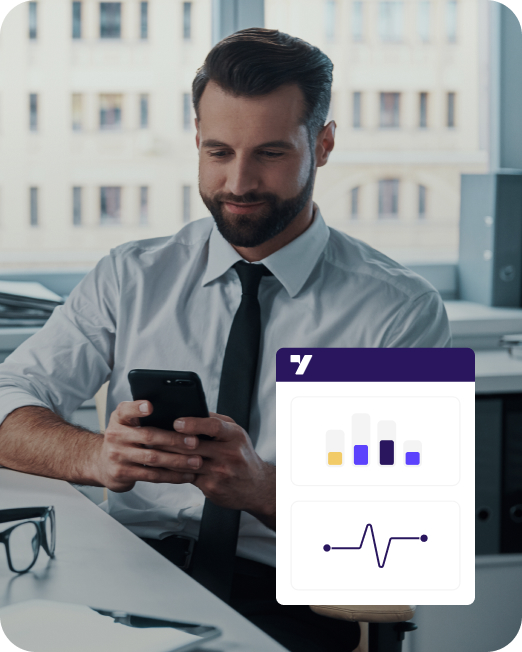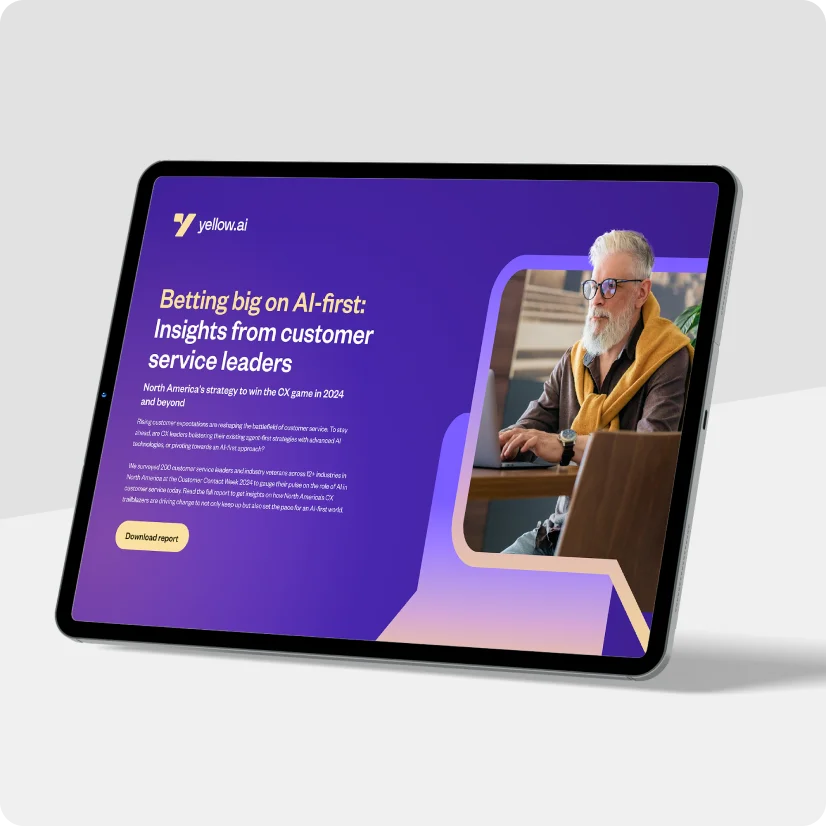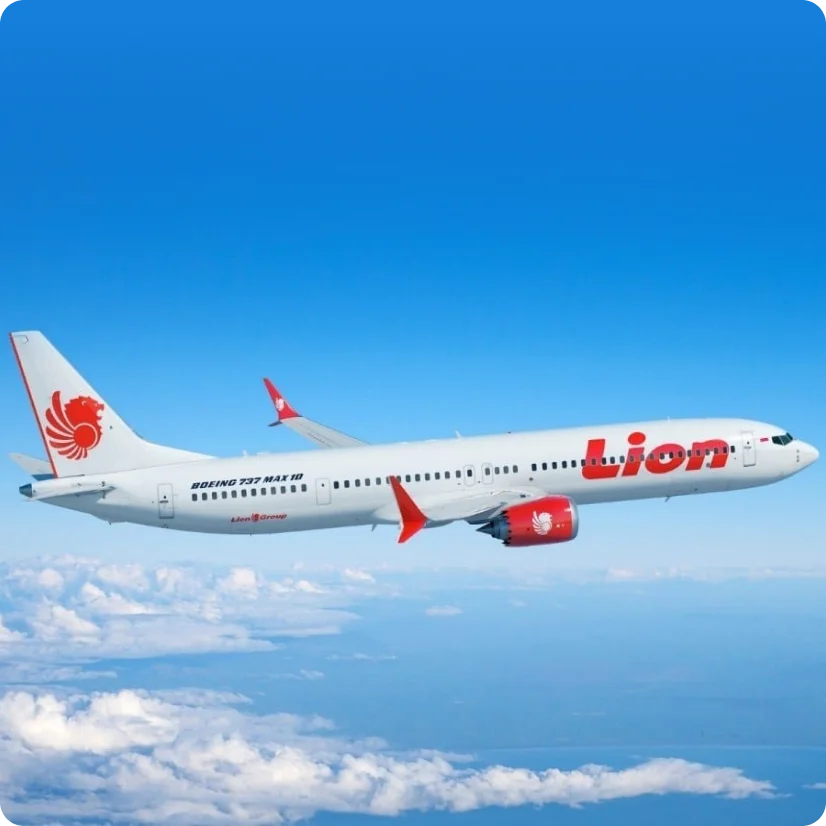Summary:
Customer loyalty software aids businesses in boosting customer satisfaction and creating lasting relationships. It plays a role in the success of any business looking to thrive in today’s customer-focused market. These technological solutions give the enterprises a holistic tool which can help them retain their customers and avoid churn. With a constantly evolving customers’ demand and expectations in today’s highly competitive world, customer fidelity can make or break a business. After a thorough evaluation, by using customer loyalty software, brands can optimize customer engagement and allegiance rates.
With this blog you will understand the definition and key features of customer loyalty software, and its advantages aimed at boosting repeat business, customer retainment, and satisfaction. It presents a roundup of the best customer loyalty software options in the market, serving as a helpful guide for companies aiming to improve their customers’ experiences through advanced loyalty solutions. Highlighting how this software improves customer service underscores the significance of personalized rewards, seamless integration, and powerful analytics. By providing an overview of options, this guide aims to equip businesses with the necessary knowledge to select the most suitable platform for their needs.
Related must-reads:
- Customer loyalty: Importance & Strategies to increase
- Customer retention: 15 strategies to improve CS
- Customer satisfaction: Benefits, examples & how to measure
- Customer service automation: Benefits and examples
This blog takes an approachable stance and offers insights into maximizing customer loyalty from an enterprise perspective while helping businesses stay competitive in their respective markets.
What is customer loyalty software?
Customer loyalty software is technology crafted to assist businesses in establishing and maintaining enduring connections with their customers. Through various tools and functionalities, organizations can oversee loyalty initiatives that acknowledge customers for their ongoing support. This software boosts customer retention and revenue growth, positioning it as an essential element of contemporary business tactics. No wonder, the worldwide customer loyalty management software industry is predicted to reach a whopping USD 1980 million by 2031.
The best customer loyalty software integrates seamlessly with various touchpoints, providing an experience that promotes customer satisfaction. Customized rewards, like points, discounts, exclusive access to new products, and special events, lead to repetitive purchases. It establishes a long-term customer-brand relationship and earns the brand solid market credibility. As customer acquisition costs continue to rise in the dynamic market, retaining existing customers becomes paramount. The correct usage of customer loyalty software can be a game-changer. It gives businesses tools to personalize experiences, anticipate customer behavior through data analytics, and proactively address potential churn, significantly reducing customer defection.
Through cutting-edge customer loyalty and retention software, gaining valuable insights into consumer behavior and enabling more effective marketing efforts has become easier for companies. Businesses can optimize their loyalty programs by using data-driven analytics to maximize customer engagement and satisfaction. Besides boosting customer loyalty, the right software solution will enhance overall business performance.
Features of customer loyalty management software
When choosing customer loyalty software, it is crucial to look for a range of functionalities that can enhance your loyalty initiatives and maximize customer experience. Leading platforms provide resources for developer integration support, scalability, data security, and various customization choices. Here are some of the primary key features of customer loyalty and retention software.
1. API-first integration capabilities
API-first customer loyalty software integrates with existing or future software applications, handling logic, validation, redemption, and tracking. Data flows to the front-end interface, ensuring fast time-to-market and immediate impact across all touchpoints. Omnichannel compatibility allows the platform to connect with any distribution channel, such as mobile apps, enhancing customer reach and engagement. Affordability is achieved through SaaS-based API-first platforms, offering predictable costs and flexible subscription models. These solutions can handle high traffic and accommodate growth without extensive rework or updates.
2. Developer-friendly design
Customer loyalty software is designed to be developer-friendly, minimizing technical burden on teams. It features comprehensive documentation, SDKs, a sandbox environment for testing, built-in monitoring tools for troubleshooting, and webhooks for seamless communication. It also allows out-of-the-box integrations with other software solutions, reducing development effort. A marketer dashboard enables non-technical teams to manage loyalty campaigns, freeing developers to focus on core business functions. Maintenance features like bulk updates, imports, and scheduling capabilities further streamline operations.
3. Robust scalability and compliance
Scalability is key for businesses looking to expand. The ideal customer loyalty program software should ensure platform performance, flexibility in infrastructure, and the ability to reach markets seamlessly. This involves running campaigns in languages and currencies while adhering to security and privacy standards. Adhering to regulations such as GDPR, CCPA, and PCI DSS is crucial for building trust with customers and avoiding complications. Essential security features include segregated data storage, options for server locations, two-factor authentication, granular user permissions, SAML support, password security measures, PCI compliance checks, security assessments, penetration testing, secure SSL connections, data encryption protocols, and robust marketing consent management systems.
4. Flexible incentive structures
Effective customer loyalty and retention software allows businesses to offer a variety of rewards to boost engagement. These rewards may include perks like shipping, free products or samples, exclusive product packages, automatic discounts, discount vouchers, loyalty points, gift cards, cashback offers, service upgrades at no cost, extended subscriptions, trial periods at zero cost, chances to win prizes in contests and referral schemes. An API-centric approach supports the distribution of these incentives across channels. The software should have features for sending notifications and reminders to customers about their progress, upcoming reward expirations, or special deals. This improves the customer experience and encourages ongoing participation in loyalty programs.
5. Customization and personalization
Consider easy customization, tailoring a customer loyalty program software to specific business needs. It allows an organization to add custom rules, events, or attributes, enabling full program personalization based on its data and criteria. The benefits are manifold, from reducing the need for custom code to aligning the program with business goals. The software should provide detailed insights into participants, reward distribution, accrued liabilities, reward expiry dates, average basket values, shopping frequency, campaign costs, and a 360-degree view of member activity. These precise analytics help businesses fine-tune their programs and augment customer satisfaction.
6. Out-of-the-box customer interfaces
Sometimes, time and budget constraints necessitate using built-in, customizable front-end solutions. Features such as an email editor, digital wallet (customer cockpit), landing page editor, and widgets can be extremely useful. These tools allow quick deployment of loyalty program interfaces, ensuring customers have a seamless experience while accessing their rewards and program information.
7. Comprehensive program limits
To establish loyalty strategies, you need software that allows program limits, such as start and expiration dates, earning rules, loyalty tiers, and reward validation rules. Setting these criteria enables precisely regulated loyalty campaigns that fend your budget while enhancing customer engagement.
Benefits of customer loyalty software
Companies must focus on retaining and engaging customers to maintain a competitive edge in today’s fast-paced digital market. One effective method for accomplishing these aims is using customer loyalty software. Below are some of the key benefits that businesses can reap from using customer loyalty and retention software.
1. Boost customer retention
Given the current emphasis on keeping customers, customer loyalty software helps businesses forge bonds with their audience by connecting through shared values and interactions that go beyond transactions. According to Merkle’s report, by 2024, a developed customer loyalty program will impact 84% of consumers’ choices to stay loyal to a brand. By offering opportunities like service maintenance plans for households, businesses can maintain customer interest and satisfaction over time. This approach decreases customer turnover rates and boosts lasting loyalty, leading to revenue growth.
2. Increase Customer Lifetime Value (CLTV)
By utilizing the best customer loyalty software, businesses can enhance Customer Lifetime Value (CLTV) over time through repeat purchases and lasting relationships. Loyal customers tend to participate in marketing campaigns, share valuable feedback, and recommend the business to others, thus increasing their overall value to the business. Increased CLTV enables companies to focus on improving customer experiences and implementing strategies for long-term growth. With loyal customers driving revenue growth, companies can attain security and allocate resources more efficiently.
3. Enhanced customer engagement
Active customer engagement is vital for business longevity. Customer loyalty software helps maintain relationships by offering rewards, special offers, and early access to new products. These efforts encourage communication between the company and its customers, fostering trust and solidifying connections. Happy customers are more inclined to spread the word about their interactions on social media, expanding the brand’s influence and drawing in new clientele. By promoting a feeling of exclusivity and acknowledgment, companies can significantly elevate customer happiness and loyalty.
Related read: 15 Best customer engagement software in 2024
4. Deeper customer insights
Having access to information is a benefit of utilizing customer loyalty software. Companies can learn about customer characteristics, purchasing behaviors, and preferences by examining data collected through loyalty programs. This valuable insight empowers businesses to customize marketing strategies and product selections to cater to customer requirements, ultimately driving sales. Making decisions based on data improves the customer journey and fosters connections, leading to a cycle of positive reinforcement where tailored interactions enhance loyalty and profitability.
5. Improved customer segmentation
Creating customer segments is important in tailoring marketing strategies and offering personalized interactions. Companies can use the best customer loyalty software to categorize their customer base using purchase history, engagement level, and demographic details. This segmentation helps refine marketing campaigns, guaranteeing that customers receive promotions at the right time. By offering personalized experiences, businesses can improve customer satisfaction, boost sales conversion rates, increase revenue, and foster loyalty over time.
6. Elevated customer experience
In today’s cutthroat market, an elevated customer experience is a must for every business to stand out. Customer loyalty software empowers companies to achieve this by giving them the tools to offer custom-made rewards, exclusive event access, and personalized communication. These special efforts make customers feel valued, creating a powerful emotional bond with the brand. This emotional connection translates to loyal customers who advocate for the brand, driving sustainable success and growth.
7. Influence buying behavior
Customer loyalty software impacts how people shop by rewarding them for coming and recommending others. When companies know what customers like and how they act, they can create loyalty plans that push them to do things like buying items or writing reviews. These special rewards don’t just boost sales; they also build lasting loyalty and involvement. Using rewards and deals to sway shopping habits is a powerful tool for increasing revenue and retaining customers.
8. Drive brand advocacy
Customer loyalty program software offers an advantage by transforming customers into loyal brand supporters. The positive impact of word-of-mouth marketing from customers is profound and budget-friendly. When customers have a great experience with a brand, they tend to spread their excitement in their circle, widening the brand’s reach without marketing expenses. Prioritizing cultivating customer connections enables businesses to leverage brand advocacy to acquire new customers and drive sustainable growth.
Top 13 customer loyalty software platforms
Selecting customer loyalty software requires businesses to evaluate platforms that effectively engage customers while also fostering retention and expansion. Here, we provide an in-depth overview of 13 leading solutions known for their prowess in enhancing customer loyalty and retention.
Top 14 customer loyalty software platforms
- Yellow.ai
- Zendesk
- Yotpo
- Kangaroo
- Talon.One
- Smile.io
- LoyaltyLion
- Runa
- Fivestars
- Alyce
- BHN Rewards
- Thanx
- Open Loyalty
- Xoxoday Plum
Yellow.ai
Yellow.ai, a generative AI-powered full-stack customer service automation platform, provides the most remarkable customer experience across channels. Enterprises use our AI-first, unified customer service platform to provide outstanding client care. Personalized, natural, and situationally relevant interactions are our hallmarks, which aim to facilitate genuine connections.
- Automating over 90% of queries boosts CSAT by 40%
- Our platform works seamlessly with your existing technology or independently, removing the need for several tools and manual intervention
- Our safe, flexible, omnichannel strategy addresses client problems through automation
- Our scalable platform cuts operating expenses by 60%.
- It integrates with your existing IT stack easily, consolidates consumer data from all channels, and connects with customers through personalized conversations.
- Explore our simplicity of use, accuracy and speed, adaptability, and omnichannel assistance
Strengthen customer loyalty with customer service automation
Zendesk
Zendesk has a range of customer support features that play a role in building customer loyalty. The platform offers tools such as AI chatbots for responses, customer satisfaction surveys for immediate feedback, and advanced customer segmentation to improve the overall customer journey. With Zendesk’s omnichannel capabilities, businesses can engage with customers across channels, from websites to media platforms.
Key features:
- Omnichannel support
- AI chatbots and automation
- Flexible platform integration
- Detailed analytics and dashboards
- Customer segmentation tools
Yotpo
Yotpo provides a strategy for retaining customers by integrating reviews, referrals, and loyalty programs within one platform. Through the use of data analytics, Yotpo empowers businesses to customize communication and monitor customer interactions across platforms. This allows companies to develop tailored marketing plans and enhance customer engagement initiatives effectively.
Key features:
- Omnichannel communication
- AI-powered analytics
- Customizable referral programs
- Loyalty rewards system
- Data-driven insights
Kangaroo
Kangaroo offers businesses a range of tools for developing and overseeing loyalty programs. By incorporating elements such as rewards based on points, in-depth analytics, and flexible customization features, Kangaroo enables companies to craft loyalty schemes that reflect their brand identity and customer interaction objectives. Additionally, the platform supports integration with partner systems to enhance its capabilities.
Key features:
- Customizable reward programs
- Comprehensive analytics
- Point-based rewards system
- Partner integrations
- Flexible design options
Talon.One
Talon.One is an expert in overseeing marketing promotions and loyalty schemes using automation. The platform’s knack for crafting rewards and monitoring customer engagement throughout phases of their experience makes it a valuable asset for boosting customer loyalty. Talon. One’s efforts to win back customers have proven to be quite successful in reigniting the interest of those who had previously stopped engaging.
Key features:
- Automated promotion campaigns
- Customer segmentation
- Win-back and re-engagement programs
- Referral systems
- Geofencing capabilities
Smile.io
Smile.io is designed for companies looking to set up loyalty programs. It offers point systems, VIP levels, and referral programs, enabling businesses to incentivize customer actions. The platform’s compatibility with e-commerce platforms guarantees the execution and supervision of loyalty schemes.
Key features:
- Points and rewards system
- VIP tier management
- Referral program integration
- Customizable design
- E-commerce platform compatibility
LoyaltyLion
LoyaltyLion is really good at developing customized loyalty programs tailored to Shopify users. The system provides loyalty points rewards for purchases, reviews, and referrals and works seamlessly with a variety of marketing tools. Its emphasis on in-cart rewards and organizing customers into segments makes it a strong choice for expanding e-commerce ventures.
Key features:
- Customizable loyalty points
- In-cart rewards
- Advanced segmentation
- Email and SMS integrations
- Shopify optimization
Runa
Runa is recognized for its rewards management features. It allows companies to create loyalty schemes with reward options, such as gift cards and digital currency. By integrating with APIs, Runa facilitates incorporation with systems, making it a versatile solution for a variety of business requirements.
Key features:
- Multiple payout options
- API integration
- Customizable rewards
- Loyalty program management
- Data-driven insights
Fivestars
Fivestars specializes in streamlining rewards and marketing strategies to boost customer loyalty. The platform enables businesses to provide tailored incentives and special offers by integrating point-of-sale systems and offering tagging and segmentation capabilities. Through its application, customers can engage effectively by accessing local establishments that offer loyalty programs.
Key features:
- Automated rewards and promotions
- POS integration
- Customer segmentation
- Mobile app engagement
- Loyalty program tracking
Alyce
Alyce aims to boost customer loyalty by offering personalized gifts. By connecting with CRM systems, businesses can keep tabs on customer preferences. Through features such as gift suggestions and personalized invitations, Alyce assists companies in enhancing their customer relationships with gestures.
Key features:
- Personalized gift recommendations
- CRM integration
- Customizable gift invites
- Branded items
- Gift research tool
BHN Rewards
BHN Rewards provides digital prepaid gift options to improve customer loyalty and attract new customers. The customer loyalty and retention software connects with CRM systems for campaign control and includes functions such as customer feedback surveys and multilingual support to reach a global audience.
Key features:
- Digital gift cards and rewards
- CRM integration
- Customer satisfaction surveys
- Multilingual support
- Custom data access
Thanx
Thanx uses customer information to improve loyalty programs by offering insights into customer habits and preferences. Businesses can use the platform to develop personalized loyalty programs encouraging customer involvement and happiness. Thanx caters to a range of industries, such as food and beverage, hospitality, and entertainment, providing tools like asset management, headless CMS, and gamification to enhance customer engagement.
Key features:
- Micro customer segmentation
- Digital asset management
- Gamification
- API-driven customization
- Mobile forms automation
Open Loyalty
Open Loyalty offers a platform for creating and overseeing loyalty campaigns that don’t require coding. With its campaign builder, businesses can quickly establish automated rewards and monitor customer interactions. This customer loyalty program software’s emphasis on gamification and digital wallets makes it attractive to companies seeking ways to connect with customers.
Key features:
- No-code campaign builder
- Automated rewards
- Gamification elements
- Digital wallet integration
- Customer interaction tracking
Xoxoday Plum
Xoxoday Plum is next on the best customer loyalty software list, which assists companies in cultivating lasting customer loyalty by utilizing its automated rewards platform. With reward delivery, landing pages, email templates, and comprehensive reporting capabilities, Xoxoday Plum tracks performance and optimizes engagement strategies.
Key features:
- Automated rewards delivery
- Customizable landing pages
- Reporting and analytics
- API integration
- Personalized communication
How to choose a customer loyalty software?
Picking the best customer loyalty software is essential for boosting customer loyalty and achieving lasting business growth. With choices, it’s crucial to weigh different factors to ensure you select a platform that fits your unique requirements and objectives.
Here are a few considerations for selecting top-notch customer loyalty and retention software:
- Ease of use and user adoption
- Return on investment (ROI)
- Customizability and branding
- Time to Value (TTV)
- Scalability and future growth
- Security and compliance
- Support and maintenance
- Flexibility and innovation
1. Ease of use and user adoption
The effectiveness of customer loyalty software greatly depends on how both staff and customers can embrace it. A user-friendly interface is crucial, allowing users to get started swiftly. When employees find the software simple to use, they can effectively oversee loyalty programs and provide top-notch customer service. Similarly, customers are more inclined to interact with a solution that’s uncomplicated and easy to navigate. Emphasizing simplicity ensures acceptance rates, ultimately leading to increased engagement and loyalty.
An intuitive layout decreases training time, boosts efficiency, and empowers your team to concentrate on tasks rather than technical issues. Furthermore, a customer-friendly interface improves the customer journey, increasing the likelihood of customers engaging in and benefiting from your loyalty initiatives. Look for customer loyalty and retention software that offers demos or trials to assess usability before committing.
2. Return on investment (ROI)
Customer loyalty software should yield a demonstrable return. Opt for a solution with advanced analytics and reporting. These features measure loyalty program KPIs, including customer retention, engagement, and revenue growth. Compare the software’s cost against its benefits. Some systems have higher costs but offer better long-term value with enhanced functionality and scalability. Include subscription, implementation, customization, and integration costs in ownership costs. A corporation may securely determine what meets its business goals by analyzing ROI.

3. Customizability and branding
Having customizable customer loyalty software is the need of the hour. Personalizing the software to reflect the brand’s identity can significantly enhance the customer experience. When choosing a solution, look for options to customize color schemes, logos, fonts, and other branding elements. This helps maintain a consistent brand image across all customer interactions, strengthening brand recognition and loyalty. Moreover, custom reports and dashboards allow a business to monitor its metrics. The flexibility to adjust these settings ensures accurate performance measurement and empowers organizations to make data-driven decisions about optimizing loyalty programs. Customizability also extends to creating tailored loyalty campaigns, enabling companies to provide rewards and experiences that resonate with their target audience.
4. Time to Value (TTV)
The time to value (TTV) refers to how long it takes to set up the software and begin seeing its advantages. A shorter TTV means a business can promptly use the software to improve customer interaction and boost revenue. When choosing customer loyalty and retention software, look for ones that have implementation processes, thorough onboarding assistance, and detailed documentation. Integrating with your systems is important. API-first solutions often provide more integration choices than monolithic platforms. Assess the support and resources provided by the software provider to ensure an effective implementation. By reducing the TTV, any business can speed up the impact of its loyalty programs and achieve returns on its investment.
5. Scalability and future growth
As a company grows, its customer loyalty program needs to grow. Selecting a system that can maintain platform availability, adapt to changing infrastructure needs, and support running campaigns in languages, markets, and currencies is essential. This ensures the loyalty program stays effective and relevant as the customer base expands. Scalability also means the software can handle increased traffic and data loads without sacrificing performance. It’s beneficial to look for platforms that offer subscription options so businesses can adjust their plans as needed. A scalable solution helps prevent disruptions and expenses associated with switching systems, ensuring consistency in operations and a smooth customer experience.
6. Security and compliance
Security and compliance are paramount when dealing with customer data. Ensure the customer loyalty software you choose adheres to industry standards and regulations such as GDPR, CCPA, and PCI DSS. Key security features include data encryption, SSL protection, two-factor authentication, user-level access control, and regular security audits. The software should also offer marketing consent management to comply with privacy laws and build trust with your customers. Check if the platform allows you to choose the location of data servers and offers dedicated data clusters for enhanced security. Robust security measures protect your customer data and maintain the integrity of your loyalty programs.
7. Support and maintenance
It’s crucial to have support and maintenance services in place for the functioning of customer loyalty software. Look for a provider that offers a range of support options, such, as chat, email, phone assistance and a detailed knowledge base. Access to an account manager or customer success team can also be advantageous. Keeping the software up to date with updates and maintenance is key to ensuring it remains equipped with the features and security upgrades. Assess the provider’s history of updates and how they respond to customer feedback. Quality support and maintenance services play a role in preventing disruptions and keeping loyalty programs running smoothly.
8. Flexibility and innovation
The best customer loyalty software should offer the flexibility to adapt to evolving market trends and customer preferences. Look for platforms that invest in continuous innovation, regularly introducing new features and capabilities. This ensures your loyalty programs stay competitive and aligned with industry best practices. Evaluate its ability to integrate with other tools and platforms you use, such as CRM systems, marketing automation tools, and e-commerce platforms. Seamless integration enhances the overall effectiveness of your loyalty programs and provides a unified view of customer data. Flexibility and innovation keep your loyalty strategies fresh and impactful, driving sustained customer engagement and loyalty.
Summing up customer loyalty software
Customer loyalty software is an indispensable part of today’s customer-centric business domain for enterprises looking to boost customer satisfaction and retention regardless of their size. Our blog delved into this software’s importance, benefits, various types, and key characteristics. This tool drives repeat purchases, increases customer engagement, and analyzes customer behavioral patterns. With our list of the best customer loyalty software available in the market, we’ve created a resource for businesses committed to exceptional customer service. Such cutting-edge, user-friendly software empowers organizations to deliver excellent experiences through personalized rewards, seamless integration, and in-depth analytics to maximize customer loyalty and retention effectively.
Looking ahead, the future of customer loyalty software is brimming with avenues, with AI and machine learning taking the lead. Breakthroughs such as AI-driven chatbots, real-time data analysis, and predictive tools are on track to transform how businesses engage with and comprehend their clientele. Experts suggest that harnessing AI can notably boost customer satisfaction by offering replies and personalized interactions while striking a balance between automation and the human touch. Data indicates that companies utilizing AI-powered customer loyalty software witness enhanced customer retention rates and increased engagement.
FAQs: Customer loyalty software
How can customer loyalty software drive personalization beyond basic rewards?
Customer loyalty software leverages advanced analytics and machine learning to tailor the customer experience. It examines actions, preferences, and buying patterns to recommend customized rewards and send marketing messages. Connecting with CRM and marketing automation tools offers a 360-degree view of interactions, boosts engagement, and facilitates customer satisfaction and retention.
What are the advantages of using an API-first customer loyalty software compared to traditional systems?
API-first customer loyalty software offers flexibility and integration functionalities compared to monolithic systems. By adopting an API strategy businesses can effortlessly connect with applications and platforms creating tailored and efficient customer interactions. This methodology facilitates the implementation of features and enhancements, boosts scalability, and eases backend modifications without disrupting front-end operations. Consequently, organizations can promptly adapt to market shifts and customer demands, cultivating a responsive and flexible loyalty initiative.
How does customer loyalty software impact customer lifetime value (CLV)?
Effective customer loyalty software enhances customer lifetime value (CLV) by fostering connections, repeat purchases, and improved retention rates through targeted loyalty programs and rewards. Advanced analytics identify valuable customers and guide service adjustments, while personalized interactions and incentives cultivate lasting loyalty, ultimately optimizing the profitability of customer relationships.
What role does data privacy play in selecting customer loyalty software?
Data privacy is an imperative point to consider when selecting customer loyalty software. The software must adhere to GDPR and CCPA regulations to maintain trust and protect customer information. Key aspects of privacy include anonymizing and securely storing data and handling user consent appropriately. Evaluate how the software handles data and whether the provider undergoes audits and holds compliance certifications. Businesses can safeguard data, minimize reputational risks, and establish a loyalty program by prioritizing data privacy.
How can customer loyalty software support multi-channel marketing strategies?
Customer loyalty software supports multi-channel marketing strategies by seamlessly integrating different communication platforms. Opt for software that handles channels like email, SMS, social media, mobile apps, and in-store interactions. It should maintain a message and rewards system across all channels to provide a consistent customer experience. Additional features, like geofencing and instant notifications, improve engagement by delivering personalized offers and reminders tailored to customer behavioral patterns and location.
























